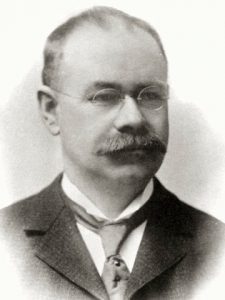Herman Hollerith (1860–1929)
 One of the most famous statisticians, particularly in the history of computer development, is Herman Hollerith, the inventor of a “punch-card tabulation machine” that revolutionized the speed with which reams of data could be processed.
One of the most famous statisticians, particularly in the history of computer development, is Herman Hollerith, the inventor of a “punch-card tabulation machine” that revolutionized the speed with which reams of data could be processed.
Hollerith was a key player in the computer revolution of the 20th century. In 1896, on the strength of his punched-card invention, Hollerith founded the Tabulating Machine Company, which was the forerunner of the Computer Tabulating Recording Company—later International Business Machines Corporation, or IBM.
The son of German immigrants, Hollerith is said initially to have had little aptitude for school-spelling, in particular, was his downfall. However, after private tutoring, he was able to enroll in the City College of New York at the age of 15; he graduated from the Columbia School of Mines with distinction at 19.
Hollerith first worked at the U.S. Census bureau as part of the data-collecting efforts of the 1880 census. He next taught mechanical engineering at the Massachusetts Institute of Technology, then worked for the U.S. Patent Office. He was awarded many patents over his career, filing for his first patent in 1884. His idea for using punched cards to read data is said to have been inspired by his watching railroad officials punch passengers’ train tickets. The device Hollerith developed could read data via the holes in punched cards; a wire would pass through the holes into a cup of mercury beneath the card, thus creating an electrical circuit. This process triggered counters and sorting bins, enabling the data to be tabulated.
Hollerith’s invention allowed the official 1890 population count to be tallied in six months; it is estimated to have shaved $5 million off the cost of the census and saved two years’ tabulation time.

















